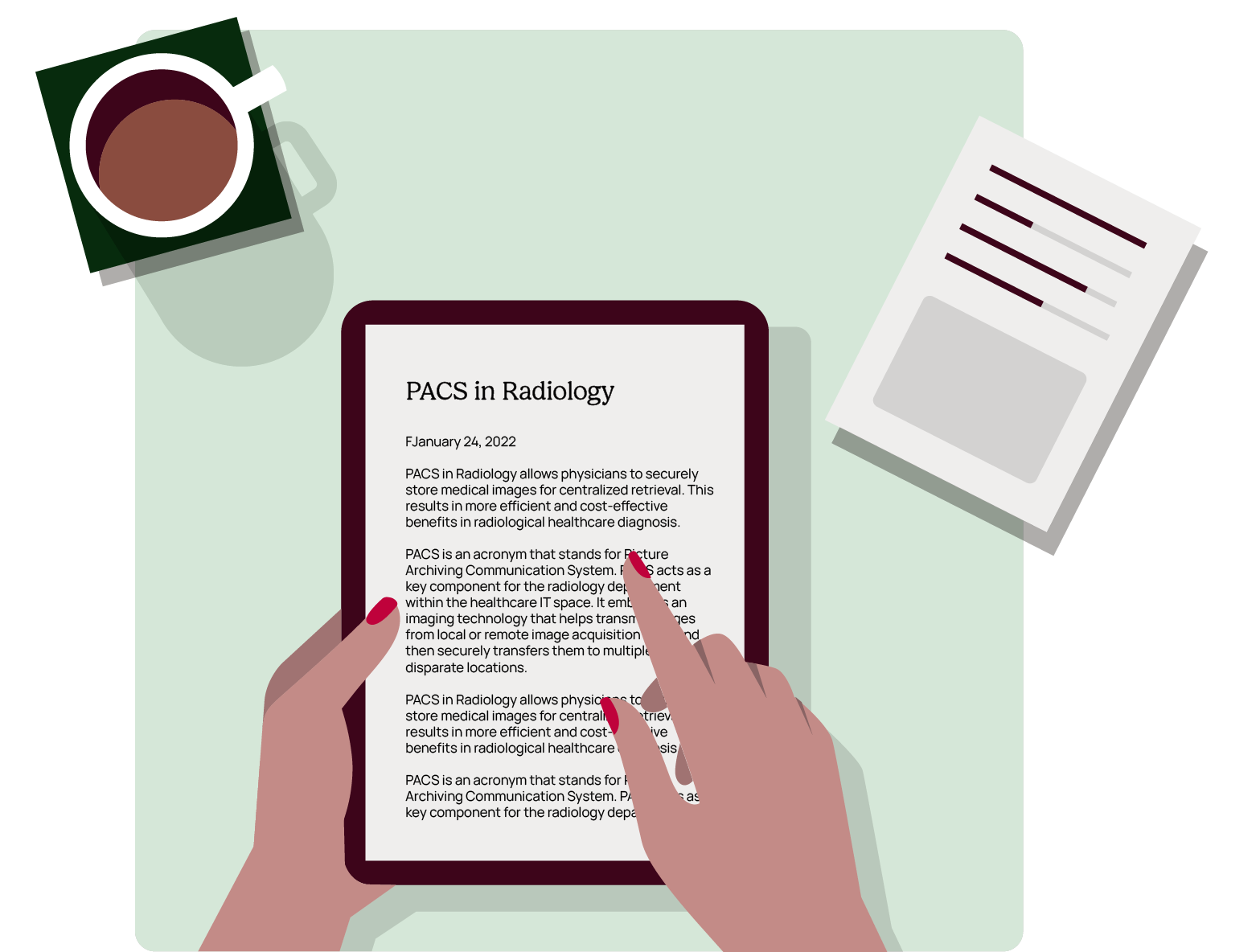January 24, 2022
PACS in Radiology allows physicians to securely store medical images for centralized retrieval. This results in more efficient and cost-effective benefits in radiological healthcare diagnosis.
PACS is an acronym that stands for Picture Archiving Communication System. PACS acts as a key component for the radiology department within the healthcare IT space. It embodies an imaging technology that helps transmit images from local or remote image acquisition sites and then securely transfers them to multiple physically disparate locations.
PACS in Radiology allows physicians to securely store medical images for centralized retrieval. This results in more efficient and cost-effective benefits in radiological healthcare diagnosis.
PACS is an acronym that stands for Picture Archiving Communication System. PACS acts as a key component for the radiology department within the healthcare IT space. It embodies an imaging technology that helps transmit images from local or remote image acquisition sites and then securely transfers them to multiple physically disparate locations.
It stores medical images that an X-ray machine, MRI machine, or other medical imaging modality generates. When these technologies produce digital images or pictures, healthcare professionals archive and send these images to other sections of the hospital or medical facility. After these images are archived, communication comes into play. DICOM programs around the healthcare facility can receive and communicate the information that each image represents.
Digital Imaging and Communications in Medicine (DICOM) refers to the universal format in which PACS and RIS data are stored and transferred. It enables digital imaging from different sources to communicate with each other and transfer from one healthcare system to the next.
PACS is a medical image management system that acquires, stores, forwards, manipulates, and displays medical images. You can think of this system as the modern and digital rendition of physically transporting film jackets and manually filing medical images around a healthcare facility.
For example, a patient comes in for a medical exam, and the medical professional prescribes an X-ray scan. The technician will send those digital images electronically to the PACS, where the images are stored. Once they are stored, a radiologist accesses the PACS software through their computing devices allowing them to dictate the patient’s exam.
PACS manages all the patient images and pictures electronically. This system acts as the forwarding mechanism and storage for patient images and orchestrates all examination alternatives. This enables radiologists to provide healthcare services while having remote access. PACS can also be installed with a set of rules which allows health care facilities to automatically forward the images to the radiologist.
Once the images are stored in the PACS server, a technician will typically verify the images and then forward them to a radiologist for examination. A technician can change the status of the images through the PACS software if necessary.
Capabilities of a PACS
PACS can leverage various modules for the transition of digital images. One of the key image functionalities that PACS is capable of is storage and administration. A good PACS incorporates a well-functioning administrative module and can monitor its resources, system management, memory use, and interpret the underlying databases. PACS administration can utilize modules to display precise statistics to the administrator, who can then use the server to send reports and image data to members of their organization.
PACS can have multiple users based on their role responsibilities. For instance, many healthcare professionals need to have access to this system for it to work in full. These individuals can include technicians, radiologists, administrators, assistant users, and more.
Some users need to have access to this system to perform daily routines, maintenance, and checks. Every time a digital image gets stored on the PACS image table, it will include the patient ID and details, the date that it was created, and the physical location where the image resides. Within this server, you can manage multiple different tables that will make up a PACS database.
What is Radiology Information Systems (RIS)?
Going through a medical imaging procedure can be painstaking and, oftentimes, frustrating for patients. Radiologists may also struggle with access to medical-grade images to offer precise readings and examinations. In addition, manually inputting data and writing reports is not only a long-driven process but can be subject to human error.
The Radiology Information System (RIS) modernizes the traditional process of printing films and storing and searching for medical images in file cabinets. With the help of RIS, this cumbersome process becomes digitized and simplified. Radiologists can utilize this virtual system to view reports, examine, and share results more efficiently. The heart of the RIS is the powerful workflow module, which allows healthcare technicians to create user-specific work lists and tasks. It streamlines a radiologist’s workflow, enabling them to have quick overviews of their patients more accurately.
Both RIS and PACS can work together and enhance patient healthcare professional experience.
Benefits of a PACS in Radiology
One of the key advantages of PACS is that it replaces hard copies of film archives with digital datasets so that they can be studied, transferred, and stored accurately. Another benefit of this system is that it gives physicians remote access to information, enabling the practice of teleradiology.
It also manages the workflow of patient examination information and shortens the procedural time for both the radiologist and the patient. In addition, it allows professionals to quickly access a patient’s current and past records safely and efficiently. This accounts for a faster speed of retrieval and transfer.
Since the system encompasses safe and verified access to patient data, it can help medical professionals maintain the integrity of patient files. Since it leads to better-organized patient records, the patient can limit radiation exposure with less need for repeated testing and re-examinations.
Other benefits include better transparency and communication between physicians, improved administration in hospitals and medical facilities, and better training for radiology students due to enhanced visual reports. It could also lead to greater staff retention for medical facilities and improved morale.
In Summary
PACS in Radiology combines pertinent radiology information with a digitalized imaging workflow that radiologists use to incorporate highly sophisticated programs and reduce redundancy and inconsistencies from traditional radiology examinations. Consult our sales team to schedule a demo today!





